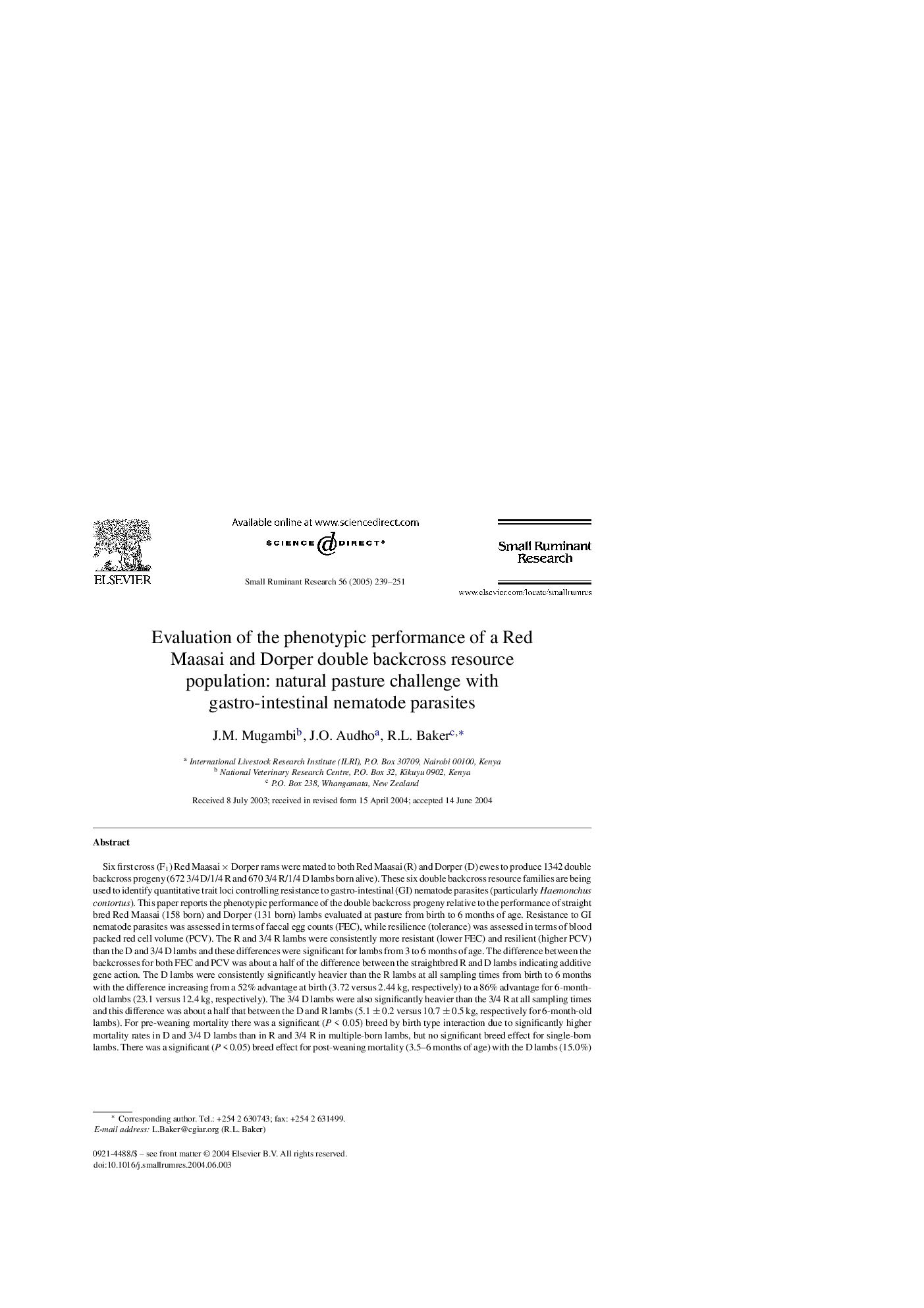| کد مقاله | کد نشریه | سال انتشار | مقاله انگلیسی | نسخه تمام متن |
|---|---|---|---|---|
| 8986832 | 1554436 | 2005 | 13 صفحه PDF | دانلود رایگان |
عنوان انگلیسی مقاله ISI
Evaluation of the phenotypic performance of a Red Maasai and Dorper double backcross resource population: natural pasture challenge with gastro-intestinal nematode parasites
دانلود مقاله + سفارش ترجمه
دانلود مقاله ISI انگلیسی
رایگان برای ایرانیان
کلمات کلیدی
موضوعات مرتبط
علوم زیستی و بیوفناوری
علوم کشاورزی و بیولوژیک
علوم دامی و جانورشناسی
پیش نمایش صفحه اول مقاله

چکیده انگلیسی
Six first cross (F1) Red Maasai à Dorper rams were mated to both Red Maasai (R) and Dorper (D) ewes to produce 1342 double backcross progeny (672 3/4 D/1/4 R and 670 3/4 R/1/4 D lambs born alive). These six double backcross resource families are being used to identify quantitative trait loci controlling resistance to gastro-intestinal (GI) nematode parasites (particularly Haemonchus contortus). This paper reports the phenotypic performance of the double backcross progeny relative to the performance of straight bred Red Maasai (158 born) and Dorper (131 born) lambs evaluated at pasture from birth to 6 months of age. Resistance to GI nematode parasites was assessed in terms of faecal egg counts (FEC), while resilience (tolerance) was assessed in terms of blood packed red cell volume (PCV). The R and 3/4 R lambs were consistently more resistant (lower FEC) and resilient (higher PCV) than the D and 3/4 D lambs and these differences were significant for lambs from 3 to 6 months of age. The difference between the backcrosses for both FEC and PCV was about a half of the difference between the straightbred R and D lambs indicating additive gene action. The D lambs were consistently significantly heavier than the R lambs at all sampling times from birth to 6 months with the difference increasing from a 52% advantage at birth (3.72 versus 2.44 kg, respectively) to a 86% advantage for 6-month-old lambs (23.1 versus 12.4 kg, respectively). The 3/4 D lambs were also significantly heavier than the 3/4 R at all sampling times and this difference was about a half that between the D and R lambs (5.1 ± 0.2 versus 10.7 ± 0.5 kg, respectively for 6-month-old lambs). For pre-weaning mortality there was a significant (P < 0.05) breed by birth type interaction due to significantly higher mortality rates in D and 3/4 D lambs than in R and 3/4 R in multiple-born lambs, but no significant breed effect for single-born lambs. There was a significant (P < 0.05) breed effect for post-weaning mortality (3.5-6 months of age) with the D lambs (15.0%) and 3/4 D lambs (7.3%) having higher mortality rates than the 3/4 R and R lambs (0.8 and 1.4%, respectively). Mortality was attributed mainly to starvation/miss-mothering followed by pneumonia during the pre-weaning period and to haemonchosis and pneumonia from weaning to 6 months of age.
ناشر
Database: Elsevier - ScienceDirect (ساینس دایرکت)
Journal: Small Ruminant Research - Volume 56, Issues 1â3, January 2005, Pages 239-251
Journal: Small Ruminant Research - Volume 56, Issues 1â3, January 2005, Pages 239-251
نویسندگان
J.M. Mugambi, J.O. Audho, R.L. Baker,